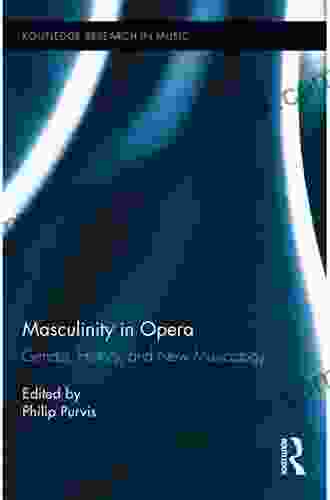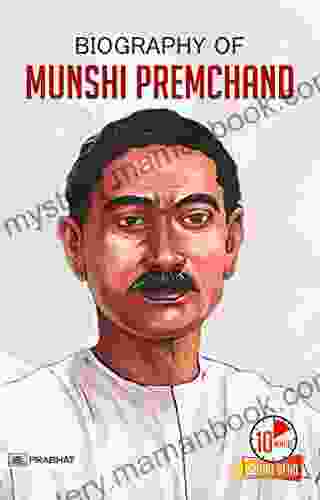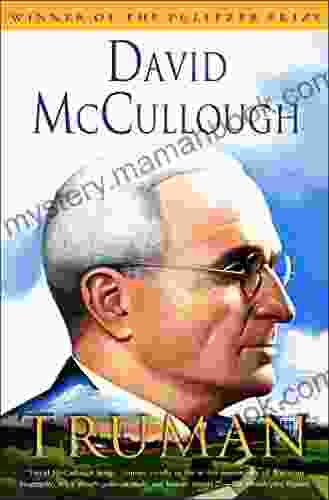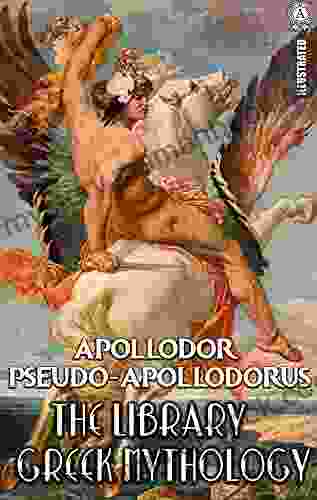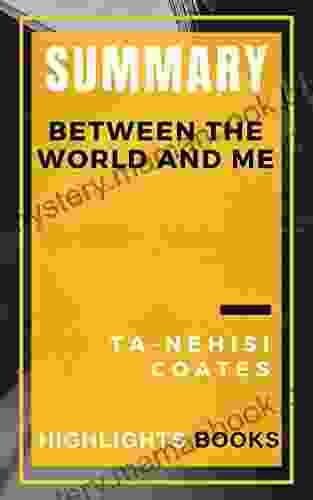Exploring the Complexities of Masculinity in Opera: A Routledge Research in Music Perspective

:
Opera, as an art form, has historically been a rich and fertile ground for exploring the complexities of human emotions, relationships, and societal norms. Among the many facets of human experience that opera has delved into, masculinity has been a particularly significant and multifaceted theme. From the heroic figures of ancient Greek mythology to the conflicted and nuanced characters of modern opera, representations of masculinity in opera have reflected and shaped cultural understandings of what it means to be a man. This article explores the diverse and often contradictory ways in which masculinity has been constructed and performed in opera, drawing on a wide range of examples from the operatic repertoire.
Historical Perspectives:
The portrayal of masculinity in opera has undergone significant changes over time, reflecting the evolving social and cultural contexts in which operas were created and performed. In the early days of opera, during the Baroque period, male characters were often depicted as powerful and authoritative figures, embodying the ideals of stoicism and honor. The heroic tenor roles of this era, such as those in Handel's operas, exemplified this idealized masculinity. However, as the Enlightenment progressed, opera began to explore a broader range of masculine archetypes, including more complex and vulnerable characters. The operas of Mozart, for example, featured male protagonists who were capable of expressing a wider range of emotions, from love and tenderness to jealousy and despair.
4 out of 5
| Language | : | English |
| File size | : | 1481 KB |
| Text-to-Speech | : | Enabled |
| Screen Reader | : | Supported |
| Enhanced typesetting | : | Enabled |
| Word Wise | : | Enabled |
| Print length | : | 278 pages |
| X-Ray for textbooks | : | Enabled |
In the Romantic era, the portrayal of masculinity in opera became even more complex and nuanced. The rise of Romanticism brought with it a fascination with the irrational and the emotional, and opera composers began to explore the darker and more conflicted aspects of male psychology. The operas of Verdi and Wagner, in particular, featured male characters who were often torn between their public and private selves, their desires and their obligations.
In the 20th century, the portrayal of masculinity in opera continued to evolve, reflecting the social and cultural upheavals of the time. The operas of Britten, Berg, and Schoenberg, among others, explored themes of male alienation, violence, and sexual ambiguity. These operas challenged traditional notions of masculinity and opened up new possibilities for representing male experience on the operatic stage.
Gender and Power:
One of the central themes in the portrayal of masculinity in opera is the relationship between gender and power. In many operas, male characters are depicted as wielders of power, both physical and social. They are often the leaders of armies, the heads of state, or the masters of their households. However, this power is often accompanied by a sense of responsibility and duty, and male characters in opera are frequently faced with difficult choices that test their moral fiber.
The operas of Verdi provide a particularly rich source of examples of the relationship between masculinity and power. In "Rigoletto," for instance, the title character is a court jester who is forced to choose between his loyalty to his master and his love for his daughter. In "Otello," the Moorish general is torn between his love for his wife and his suspicions of her infidelity. And in "Falstaff," the eponymous character is a fat, aging knight who is constantly getting into trouble but who ultimately retains a sense of dignity and self-worth.
Love and Relationships:
Another important aspect of the portrayal of masculinity in opera is the theme of love and relationships. Male characters in opera are often depicted as being deeply passionate and capable of great love. However, their relationships are often complicated by social conventions, family obligations, and the expectations of others.
The operas of Puccini provide some of the most famous examples of the exploration of love and relationships in opera. In "La Bohème," the young poet Rodolfo falls in love with the seamstress Mimi, but their relationship is doomed by poverty and illness. In "Tosca," the singer Floria Tosca is torn between her love for the painter Cavaradossi and her loyalty to her country. And in "Madama Butterfly," the geisha Cio-Cio-San sacrifices everything for her love of the American naval officer Pinkerton.
The Voice:
The human voice is a powerful and expressive instrument, and it plays a vital role in the portrayal of masculinity in opera. Male voices in opera are typically divided into four categories: bass, baritone, tenor, and countertenor. Each voice type has its own unique characteristics and associations, and composers have used these differences to create a wide range of masculine characters.
Bass voices are often associated with power and authority, and they are frequently used for roles such as kings, fathers, and military leaders. Baritone voices are more versatile, and they can be used to portray a wide range of characters, from the noble to the villainous. Tenor voices are often associated with youth and lyricism, and they are frequently used for roles such as lovers and heroes. Countertenor voices are the highest male voices, and they are often used for roles that require a sense of androgyny or otherworldliness.
The choice of voice type for a particular role can have a profound impact on the way that the character is perceived by the audience. For example, a bass voice can make a character seem more powerful and authoritative, while a tenor voice can make a character seem more vulnerable and sympathetic. Composers have used these differences to create a wide range of masculine characters, each with their own unique vocal signature.
:
The portrayal of masculinity in opera has undergone significant changes over time, reflecting the evolving social and cultural contexts in which operas were created and performed. From the heroic figures of ancient Greek mythology to the conflicted and nuanced characters of modern opera, representations of masculinity in opera have reflected and shaped cultural understandings of what it means to be a man.
Masculinity in opera is a complex and multifaceted theme that has been explored by composers from all eras. The operas discussed in this article provide just a few examples of the many ways in which masculinity has been constructed and performed on the operatic stage. By examining the diverse and often contradictory ways in which masculinity is represented in opera, we can gain a deeper understanding of the social and cultural forces that have shaped our understanding of what it means to be a man.
References:
4 out of 5
| Language | : | English |
| File size | : | 1481 KB |
| Text-to-Speech | : | Enabled |
| Screen Reader | : | Supported |
| Enhanced typesetting | : | Enabled |
| Word Wise | : | Enabled |
| Print length | : | 278 pages |
| X-Ray for textbooks | : | Enabled |
Do you want to contribute by writing guest posts on this blog?
Please contact us and send us a resume of previous articles that you have written.
 Top Book
Top Book Novel
Novel Fiction
Fiction Nonfiction
Nonfiction Literature
Literature Paperback
Paperback Hardcover
Hardcover E-book
E-book Audiobook
Audiobook Bestseller
Bestseller Classic
Classic Mystery
Mystery Thriller
Thriller Romance
Romance Fantasy
Fantasy Science Fiction
Science Fiction Biography
Biography Memoir
Memoir Autobiography
Autobiography Poetry
Poetry Drama
Drama Historical Fiction
Historical Fiction Self-help
Self-help Young Adult
Young Adult Childrens Books
Childrens Books Graphic Novel
Graphic Novel Anthology
Anthology Series
Series Encyclopedia
Encyclopedia Reference
Reference Guidebook
Guidebook Textbook
Textbook Workbook
Workbook Journal
Journal Diary
Diary Manuscript
Manuscript Folio
Folio Pulp Fiction
Pulp Fiction Short Stories
Short Stories Fairy Tales
Fairy Tales Fables
Fables Mythology
Mythology Philosophy
Philosophy Religion
Religion Spirituality
Spirituality Essays
Essays Critique
Critique Commentary
Commentary Glossary
Glossary Bibliography
Bibliography Index
Index Table of Contents
Table of Contents Preface
Preface Introduction
Introduction Foreword
Foreword Afterword
Afterword Appendices
Appendices Annotations
Annotations Footnotes
Footnotes Epilogue
Epilogue Prologue
Prologue Robert Broomall
Robert Broomall Mark Gudgel
Mark Gudgel Philip Armstrong
Philip Armstrong Matt Brown
Matt Brown Gert Boyle
Gert Boyle Kirsten K Shockey
Kirsten K Shockey Joseph Roosevans
Joseph Roosevans Louise Penny
Louise Penny Sean Donnelly
Sean Donnelly Maurice Friedberg
Maurice Friedberg Tom Sharpe
Tom Sharpe Anthony Debarros
Anthony Debarros Ben Rehder
Ben Rehder H D F Kitto
H D F Kitto Bess Streeter Aldrich
Bess Streeter Aldrich Gareth Worthington
Gareth Worthington Rajesh Jyotishi
Rajesh Jyotishi Dara Berger
Dara Berger Jens Helbig
Jens Helbig Juju Sundin
Juju Sundin
Light bulbAdvertise smarter! Our strategic ad space ensures maximum exposure. Reserve your spot today!
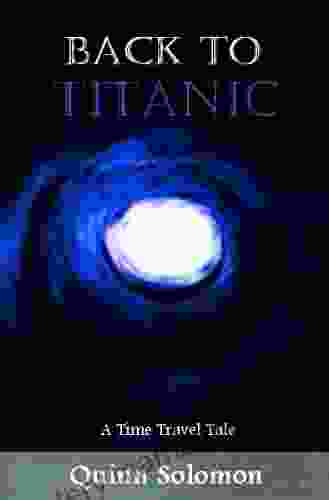
 Nathaniel PowellUnveiling the Enchanting Back to Titanic Time Travel Tale: A Journey Through...
Nathaniel PowellUnveiling the Enchanting Back to Titanic Time Travel Tale: A Journey Through... Milton BellFollow ·10.1k
Milton BellFollow ·10.1k Octavio PazFollow ·15.4k
Octavio PazFollow ·15.4k Dwayne MitchellFollow ·7.4k
Dwayne MitchellFollow ·7.4k George R.R. MartinFollow ·2.1k
George R.R. MartinFollow ·2.1k Jan MitchellFollow ·18.1k
Jan MitchellFollow ·18.1k Vincent MitchellFollow ·19.6k
Vincent MitchellFollow ·19.6k Ken FollettFollow ·7.7k
Ken FollettFollow ·7.7k Jonathan HayesFollow ·8.3k
Jonathan HayesFollow ·8.3k
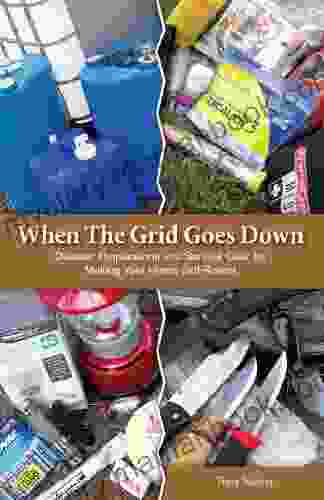
 Luke Blair
Luke BlairWhen the Grid Goes Down: Disaster Preparations and...
In today's modern...

 Diego Blair
Diego BlairComputer Virus Guide: Everything You Need to Know to Stay...
Computer viruses...
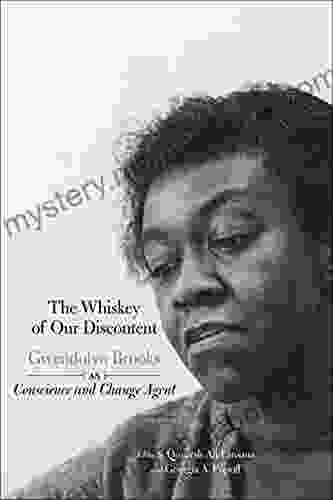
 Dale Mitchell
Dale MitchellThe Whiskey of Our Discontent: A Literary Exploration of...
John Steinbeck's The...

 Mark Mitchell
Mark MitchellA Culinary Odyssey: Exploring the Delectable World of...
An to Southern...
4 out of 5
| Language | : | English |
| File size | : | 1481 KB |
| Text-to-Speech | : | Enabled |
| Screen Reader | : | Supported |
| Enhanced typesetting | : | Enabled |
| Word Wise | : | Enabled |
| Print length | : | 278 pages |
| X-Ray for textbooks | : | Enabled |


